



The all-new Tucson Parametric Jewel Hidden Lamp
Most of the concept cars designed by automakers tend to attract us with their vivid designs. However, it is very rare for such high-tech designs to be mass-produced as showcased on the screen; this is because such designs of the concepts cannot be mass-produced without bulletproof technologies. However, the fourth-generation Tucson is almost identical to the looks of the Vision T concept that was unveiled at the Los Angeles Auto Show last year. Vision T gained public attention for its new design philosophy and bold-looking radiator grille created by Hyundai Motor Company.
The key to the fourth-generation Tucson's unconventional design is the Parametric Jewel Hidden Lights in the front. The Parametric Jewel Hidden Lights is a complete version of the "hidden lighting" technology, which was first applied to Palisade and Sonata, and can be said to be a symbol of lighting technology that has achieved an organic connection between the radiator grille and headlamps.

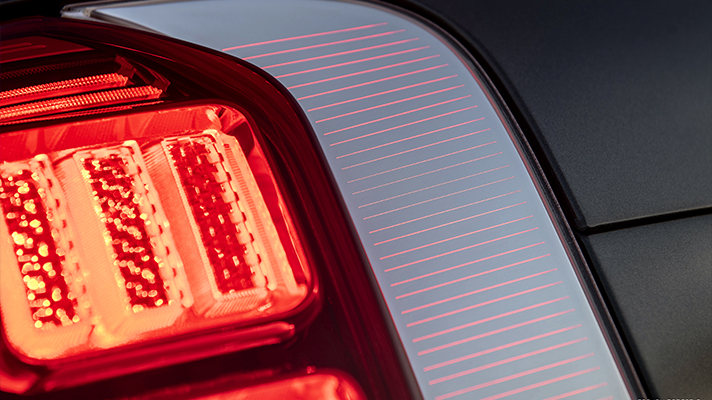
Hyundai's flagship SUV Palisade was the first vehicle to apply the hidden lighting technology. The long, vertically stretched tail lamp is connected to a matte chrome garnish. Usually, it works just as one of the design elements that adds a three-dimensional effect; but when turned on, the chrome garnish gives off subtle rays of LED lighting, glowing softly. As such, these early hidden lighting was introduced to boost the decorating effect, adding beauty to the tail lamps.

The first creation to apply the hidden lighting technology to the headlamps is the eighth-generation Sonata. The eighth-generation Sonata, which reflects Hyundai's new design philosophy, can find novel attempts to hide LED lamps in chrome garnish. Inside the daytime running light is the chrome surface, making it look like a regular chrome garnish when the lights are off.
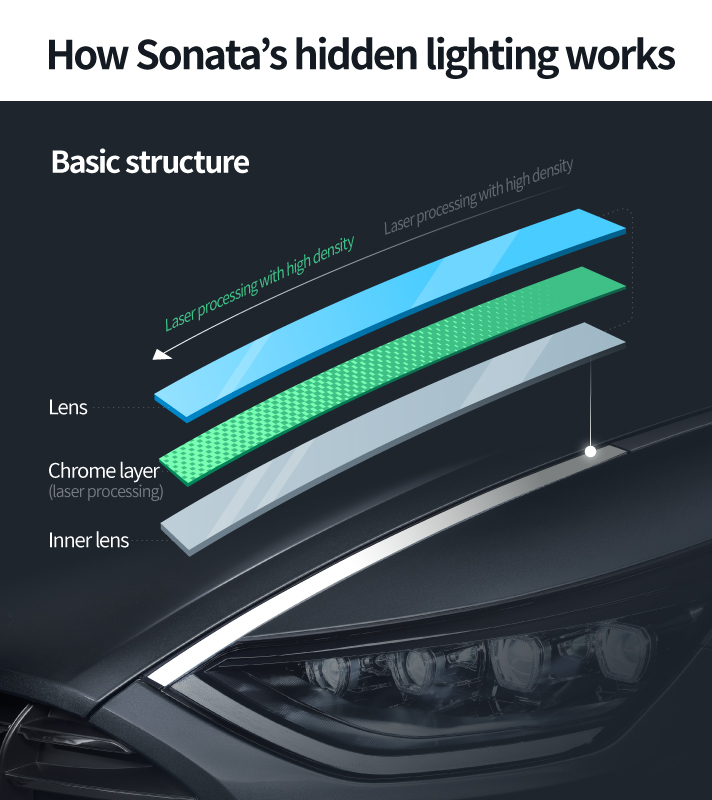
A closer look at the 8th-generation Sonata's headlamps reveals exquisite craftmanship blending skill and emotion called the 'laser-etching' process. The gradation is achieved by etching the chrome over the LED at different intensity and intervals. The eighth-generation Sonata's daytime running lamps have increased visibility due to the wider area of light emitted by the application of hidden lighting technology. In addition, the side chrome garnish, which has become the signature design element since the 6th generation Sonata, was able to be more naturally connected to the headlamps.

Since then, Hyundai has expanded its application of hidden lighting technology through The New Grandeur. It has completed its unconventional design by implementing hidden lighting technology inside the radiator grille, which already features unique looks. Moreover, the daytime running lights and direction indicators lights became the boundary between the headlamp and radiator grille, highlighting its unique beauty of the front design.

The New Grandeur's aluminum-coated daytime running lights completely consummate with the parametric jewel pattern of the radiator grille when they are off. Thanks to the hidden lighting technology, parts of the radiator grille have been able to function as headlamps.
Unlike Sonata, however, the hidden lights of the New Grandeur had to meet a few safety standards. Although the Sonata's hidden lighting has a strong design role, the New Grandeur's hidden lights also serve as a daytime driving light as well as a direction indicator light, where visibility is more important than anything else. In addition, Hyundai has completed the hidden lighting of the Grandeur after producing more than 200 prototypes and various trials and errors, including the durability of the lamp itself and securing impact safety.

The most distinctive feature of the fourth generation Tucson is that it perfectly reproduces the bold and futuristic face design of the Vision T concept. Hidden lighting is the secret ingredient, again. The Tucson also housed hidden lighting technology like the Sonata and The New Grandeur to implement an unprecedented and unconventional design.

Just like The New Grandeur, Tucson also features a concept that sometimes becomes a radiator grille and sometimes a part of the headlamps. But, how to implement the hidden lights is slightly different. The size of the daytime driving lamps of the fourth-generation Tucson is about five times larger than those of the New Grandeur. Therefore, if the laser-etching technique is applied to drill fine holes for effective light penetration, it can look different from the radiator grille when extinguishing, and the time for manufacturing would be too long as well.
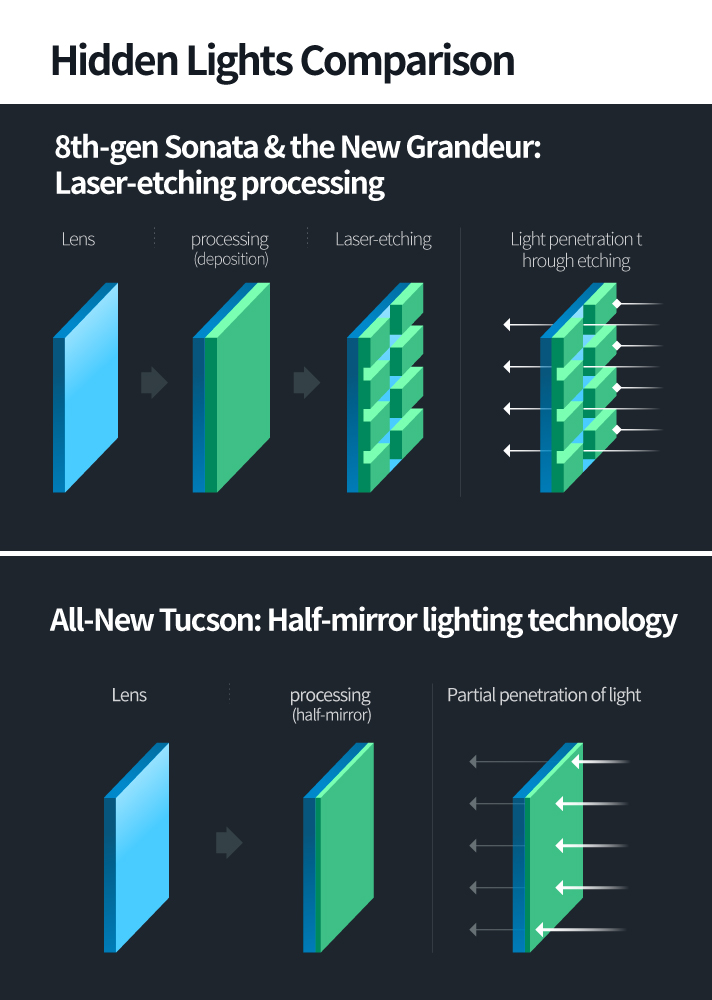
For the large-sized lamps, Hyundai replaced its old but essential laser-etching technique with half-mirror lighting technology. The processing involves coating the lens with a thin layer of specialized material. Thanks to state-of-the-art half-mirror lighting technology, when the DRLs could dissolve into the radiator grille on 4th-gen Tucson.
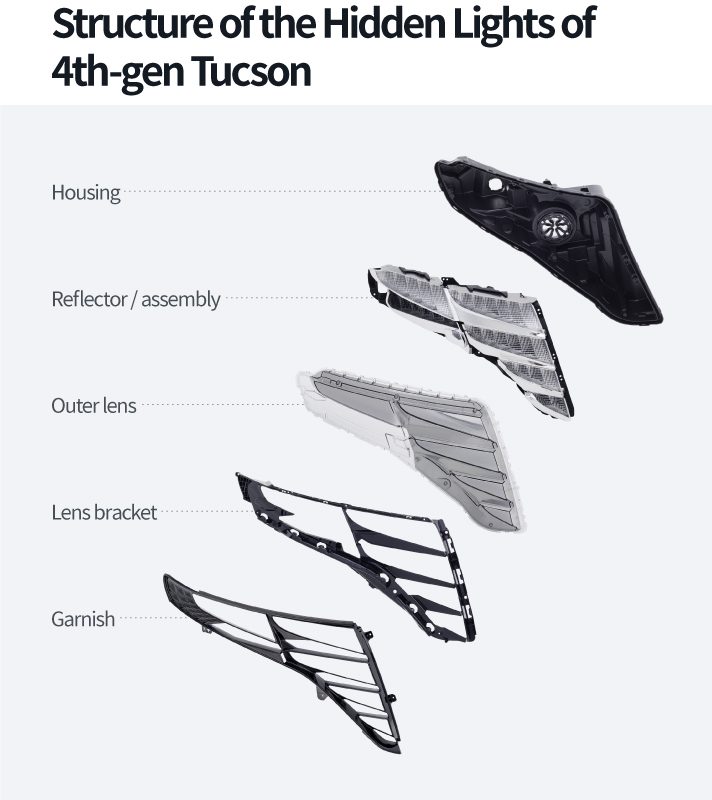
As the new construction method was applied, Hyundai proceeded with a combination of reliability verification and improvement accordingly. By setting up harsh virtual environmental conditions depending on the heat sources inside and outside of lamps, the engineers tested for cracks and stripping by heat expansion (the tendency of matter to change its shape, area, volume, and density in response to a change in temperature). Through this process, it has completed surface treatment material technology that can withstand harsh environmental conditions. As a result, nickel-chrome materials were applied to provide heat resistance and to feature the subtle colors of dark chromium used in the radiator grille, satisfying both durability and shade.
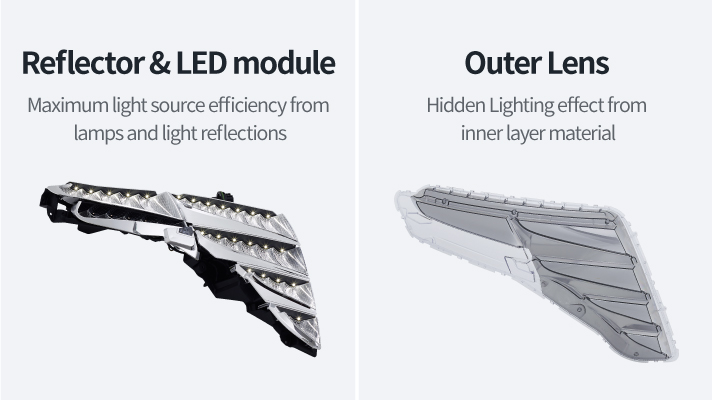
Adding materials to the lens naturally reduces light penetration through the lens, reducing efficiency So it was necessary to reinforce the performance of the lamps to meet the safety standards. Hyundai has increased the power and the number of LED units in order to implement brightness performance above the required level, even after applying the nickel-chrome coating.
Thanks to the increased performance of LED modules, it was now possible to secure stable power and visibility of LEDs, and it could also feature a jewel-like lamp by applying an indirect light reflector. In addition, the outer lens that was coated inside with nickel-chrome (half-mirror) looked exactly like the radiator grille while off, and also serves as the daytime running lights and direction indicator lights while on.
However, the increased amount of electricity also means increased temperature. To respond to this matter, Hyundai has introduced Over-Heat Protection (OHP) technology. This is to prevent damage on parts due to excessive temperature inside the lamps using a temperature sensor on LED lamps. If the sensor detects the temperature exceeding the set temperature, it immediately reduces the amount of power to regulate the temperature of the lamp module. In other words, it is a perfect safety net that satisfies the design, function, and durability of the lamp.
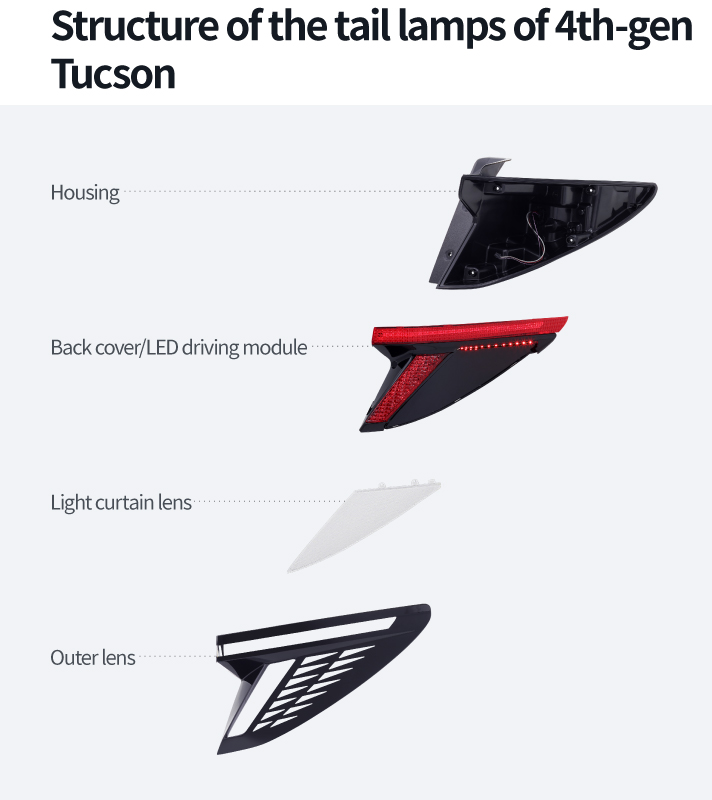
Fourth-generation Tucson also applied hidden lighting technology to its tail lamps. The multiple triangular parts arranged on the left and right sides of the tail light guide, stretching horizontally, are where the hidden lighting concept is shown. The gray translucent lenses partially block out light from the outside to implement a hidden lighting image when the lights are off. And with the LED lights up, the light curtain lens spreads the light widely and evenly, completing the intense looks as if numerous triangles spread their wings together.
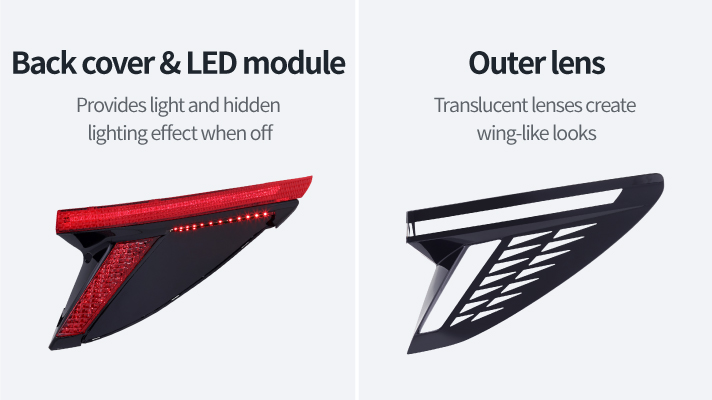
However, the implementation method is different from daytime running lights that used the half-mirror technology. The outer lens of the tail lamp is processed using both a translucent lens and a black lens with a relatively low penetration rate. And the inner parts of the back cover were all colored black to maximize the hidden lighting effect, and a unique design was completed through triangular patterns engraved. These two parts hide the light curtain lens to conceal the triangular pattern when the lights are off.

A wider application of the hidden lighting technology is expected in the future, thanks to the introduction of the new half-mirror technology. In particular, the new processing technique can be used for much larger lamps, such as those of the fourth-generation Tucson; and it is also highly likely to be used in future self-driving vehicles that send information through lamps to surrounding vehicles and pedestrians. Just as fourth-generation Tucson, which completed the hidden lighting technology of the Vision T concept, the beautiful design can only be achieved through technological evolution.
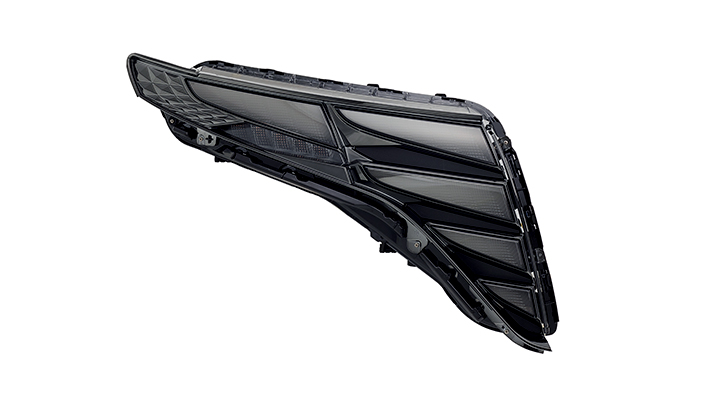
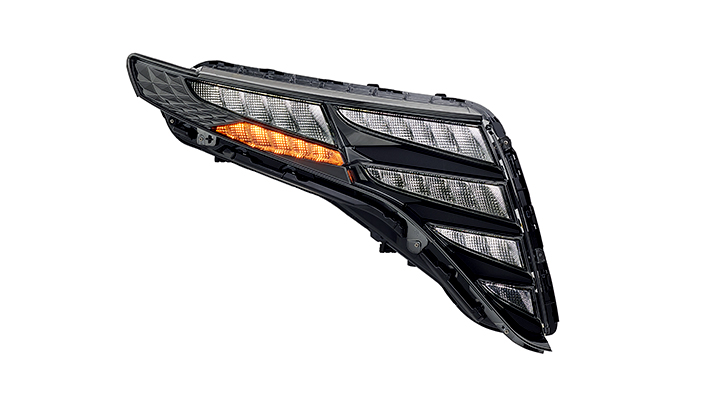
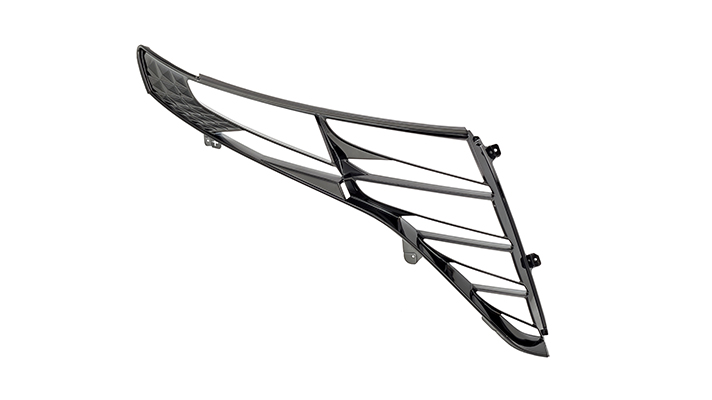
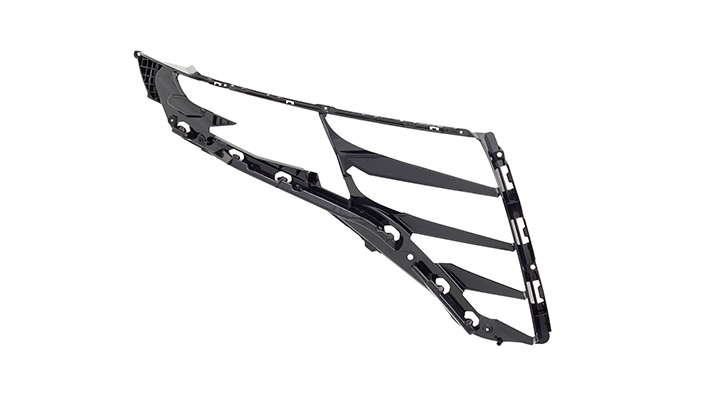
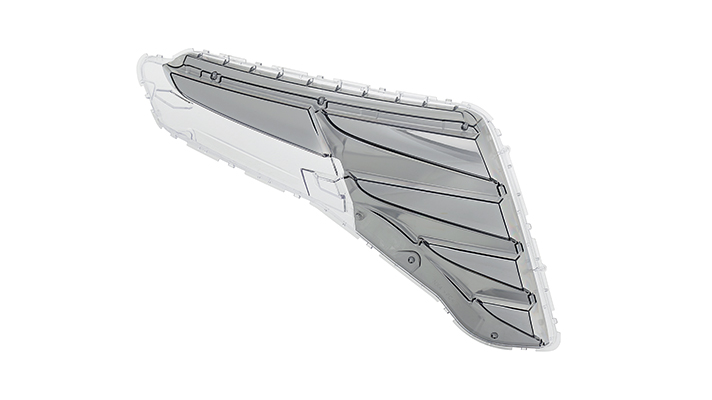
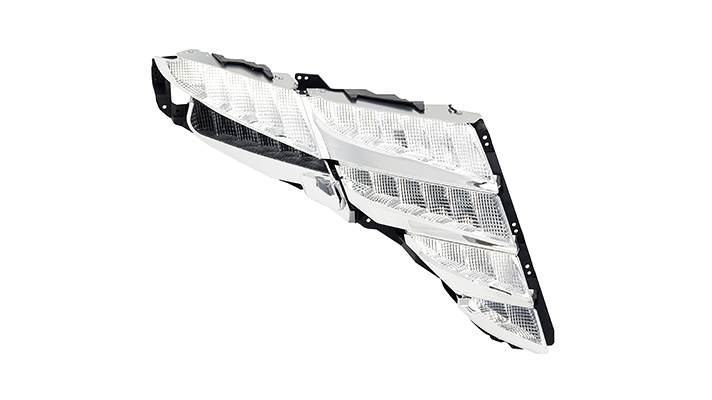
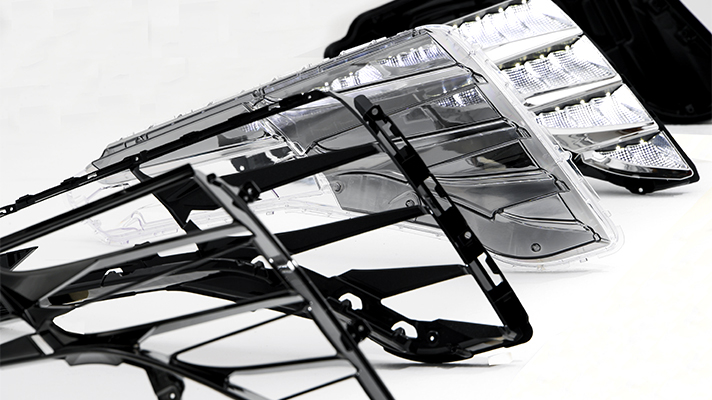
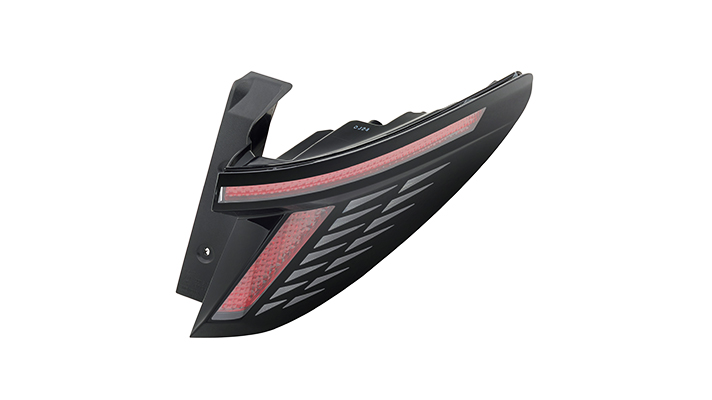
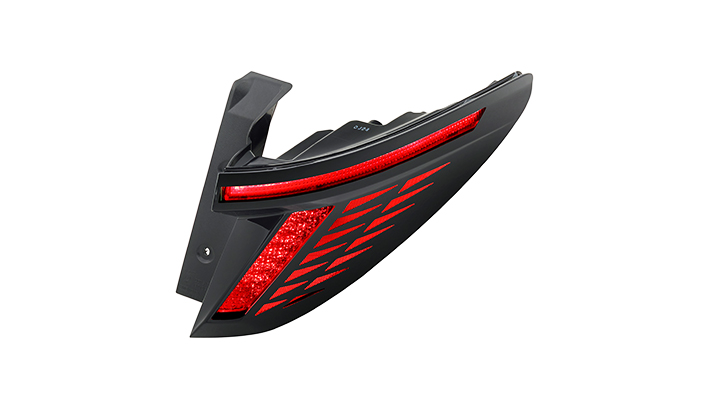
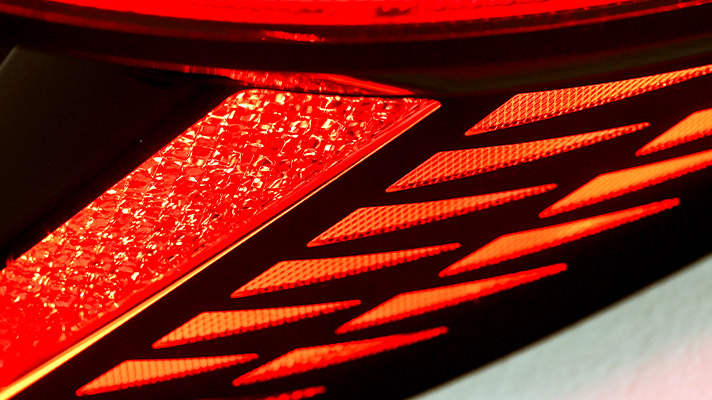
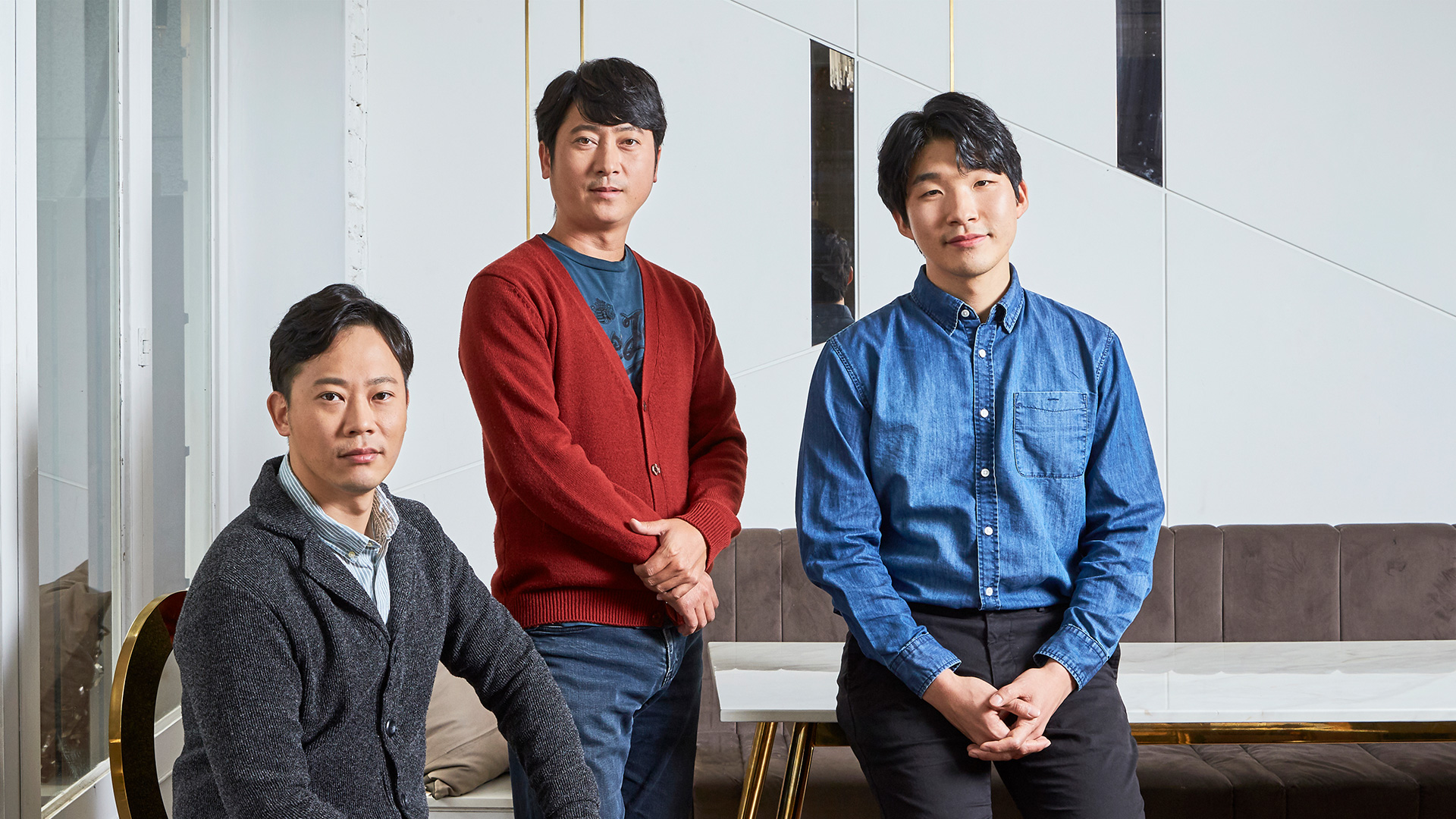
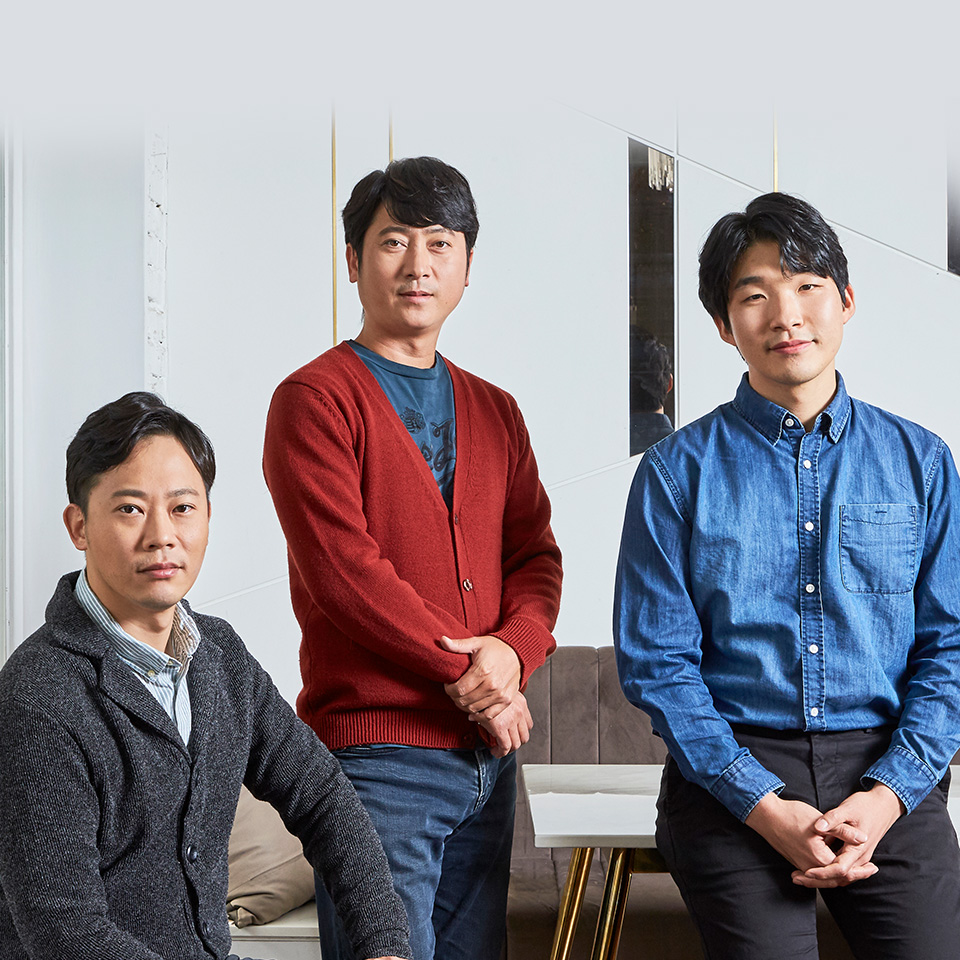
The Story of Hidden Lighting Technology
2021.01.07 15min read